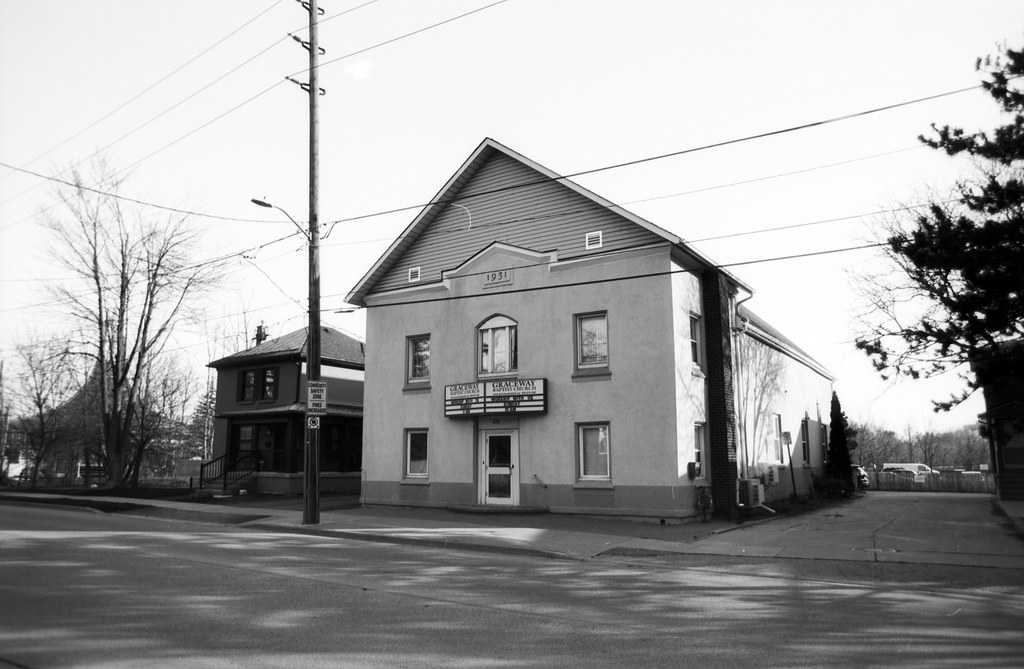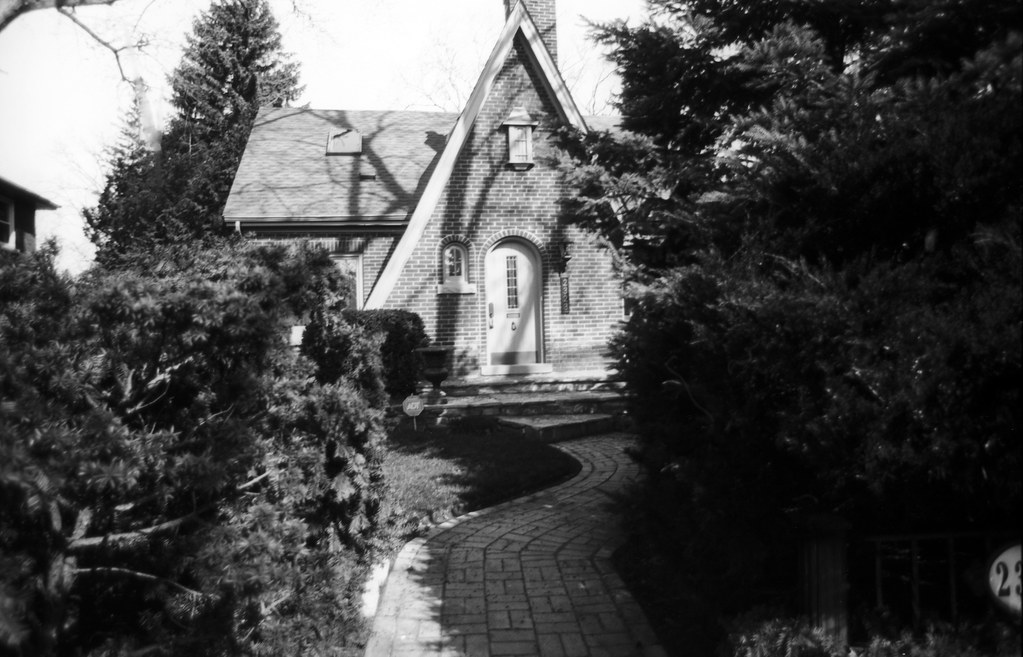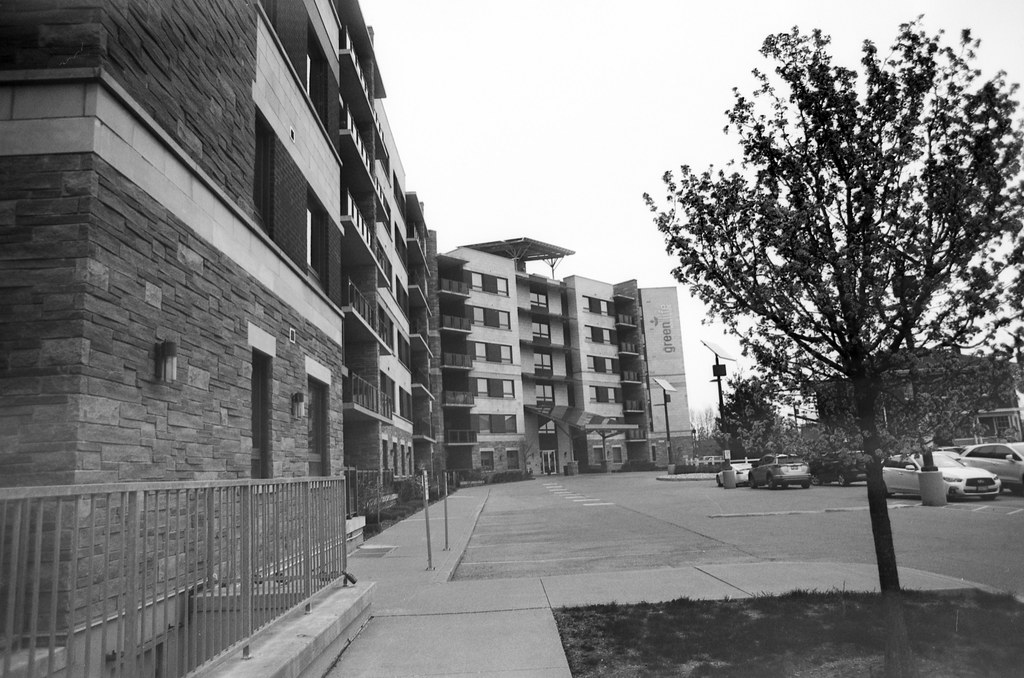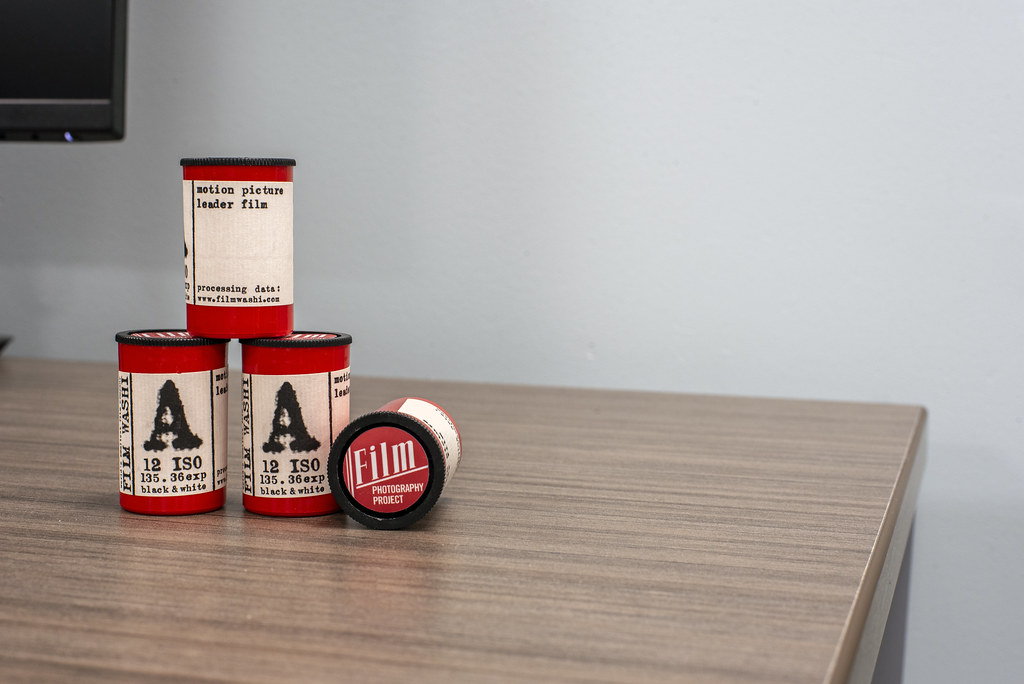When it comes to film from FilmWashi, they can get their hands on some pretty unique stocks. And I’ve had some good luck with most of their films; others have struggled a bit. Thankfully I’ve been working through my wish list in their catalogue and have gotten my hands on most of them. But one has been out of stock until recently, and that’s FilmWashi A. Described as a motion picture leader film, the film is spliced onto the front of a motion picture prints to help lead the film through the projector. But it can be used for high-contrast uses, like titles or that iconic countdown clock. I’ve had mixed results with high-contrast films, but I was ready to retake the plunge!
Film Specs
Type: Orthochromatic B&W Film
Film Base: polyester, 120 mμ
Film Speed: ASA-12, Latitude -1 Stop
Formats Available: 135 (35mm)
Roll 01 – Kodak D-76
I like this set of images far more than I expected. The lighting on the morning I was out shooting this roll was bright, and there were lots of different ranges between the shadows and highlights. And as a high-contrast film, I did not expect much in the way of latitude or forgiveness. But these images certainly have an attention-grabbing look to them. Right from the tank, the negatives were rather thin, but I could see enough detail to pull some out when scanning. The V700 and Silverfast handled the scanning process well, with some adjustments needed in Silverfast and a light touch on the levels and brightness in Photoshop. The images are high-contrast, with some mid-tones but not a lot, again with hard mixed light, not the best conditions for this film. But these images have excellent edge sharpness and fine grain. I would stick to the 1+1 dilution but maybe add thirty seconds to the development time.




Roll 02 – Adox FX-39 II
Having used Ilfotec HC/HC-110 with high-contrast films in the past from FilmWashi, I decided to skip it entirely, especially after seeing the results from D-76. Instead, I used the Delta 400 times for Adox FX-39 II with the second roll, as the Washi A datasheet prescribed. As soon as I pulled the negatives out from the tank, I knew I had some winners here. High contrast, of course, but I could see some mid-tones in these negatives. Although the mid-tones are seriously compressed, you get that high-contrast but much more mid-tones than the D-76 shots. I also lost a lot in my reds, with most reds rendering flat black. You get almost no grain and have good edge sharpness and overall sharpness. I like these results, but maybe a stop of over-exposure or an extra 30 seconds of development would help open up the shadows.




Roll 03 – Adox Rodinal
What better to try taming a film’s contrast with a one-stop over-exposure and pull development? Going with the ASA-6 times according to Massive Dev Chart and a 1+50 dilution. And you know the results are okay; I don’t think I would get anything better with the published film speed and time. Yes, I am still getting those high-contrast results but getting better shadow detail. The one thing I did notice is that the images are a little soft; not sure if that was because of the cupping on the film and it didn’t scan properly or as a result of the modifications. But these are perfectly acceptable results; some are soft at the edges, but most have that fine sharp edge. And there is a bit of an uptick in visible grain, but nothing to complain about. This grain may be more noticeable at full speed than the one-stop over-exposure. In any case, the ASA-6 and ASA-12 images will be perfectly acceptable.




Roll 04 – SPUR HRX
Using another Delta 400 time for the final roll, and sadly something didn’t go right. While the previous three rolls have had clear bases, this one shows great base fog. I’m unsure if it is because something happened to my roll or if my fixer has finally died. Thankfully, I could cut through this fog and have some decent images. This will undoubtedly be a skewed look, but I like these images. I think HRX is a great developer for the film, but the lighting conditions I was shooting in helped low-contrast, bright overcast. There is still that high contrast to the images, but there are much more mid-tones than in past rolls. You also get that same edge, sharpness and fine grain, and that’s the power of HRX as a developer.




Final Thoughts
The one thing I did notice with Washi A is how tough it is to load onto plastic reels. Some polyester films are challenging because the base is paper thin, but Washi A made me work for every bit I got onto the reels. It isn’t as hard as Washi I, but it was more challenging than some acetate-based film stocks. It also curled when I took it out of the tank and hung it to dry; I had to add a second clip on the bottom to get it to hang straight. Thankfully it dried flat with no sign of cupping. Scanning went smoothly; the V700 and Silverfast 9 SE handled the high-contrast negative efficiently, and little needed to be adjusted in Photoshop, aside from dust removal, level adjustment and sharpening. I’m not always a fan of these high-contrast speciality motion picture films, but Washi A certainly gave me a chance to see what they can do, and I’m rather pleased with the results I got from the film. Will I use it again? Well, here’s the rub, Film Washi sources film from suppliers, and right now, the company that supplies the master rolls is going through some trouble and working on building out its customer base. So what is available right now might be the last time for a bit that we see Washi A, but the straightforward answer is that I don’t do a lot of work within this type of film stock, that high-contrast monochromatic look. But it might be worth a shot if you’re into this look and can get your hands on Washi A! I got my rolls through the Film Photography Project, but you can also order directly from Film Washi.
Further Reading
Don’t just take my word on Washi A; you can check out the reviews by other excellent camera reviewers!
Kosmo Foto – Film Review: Film Washi “A”
